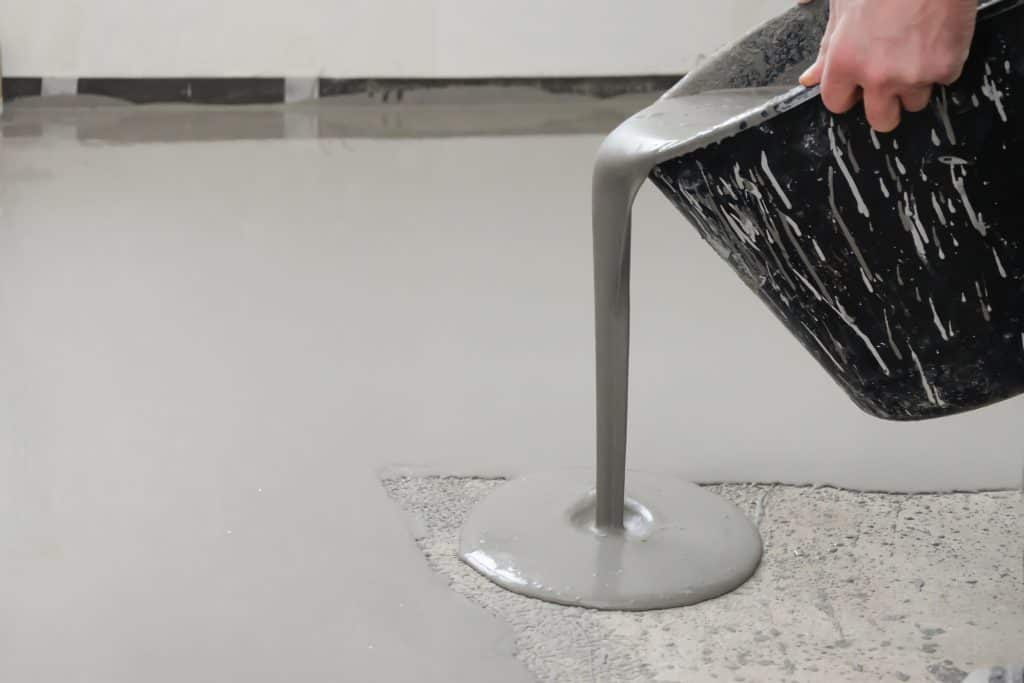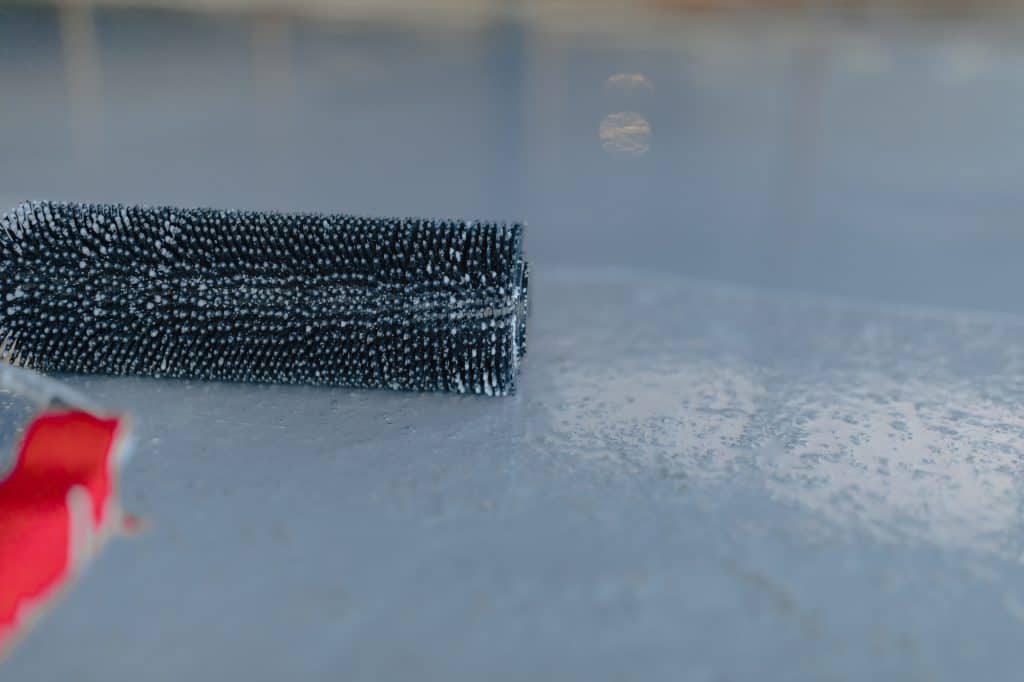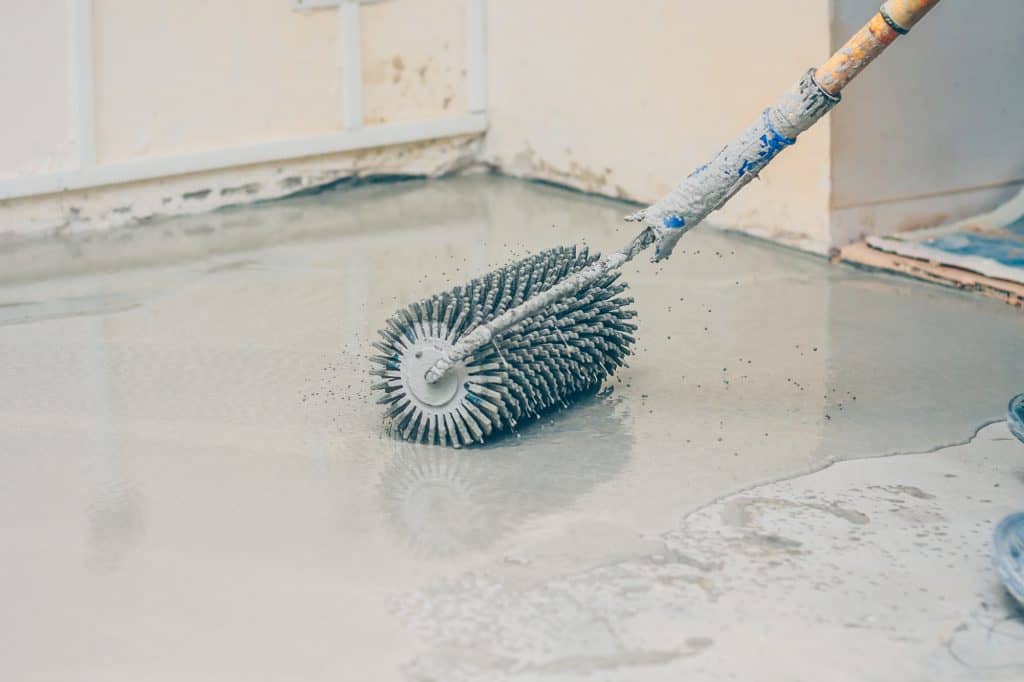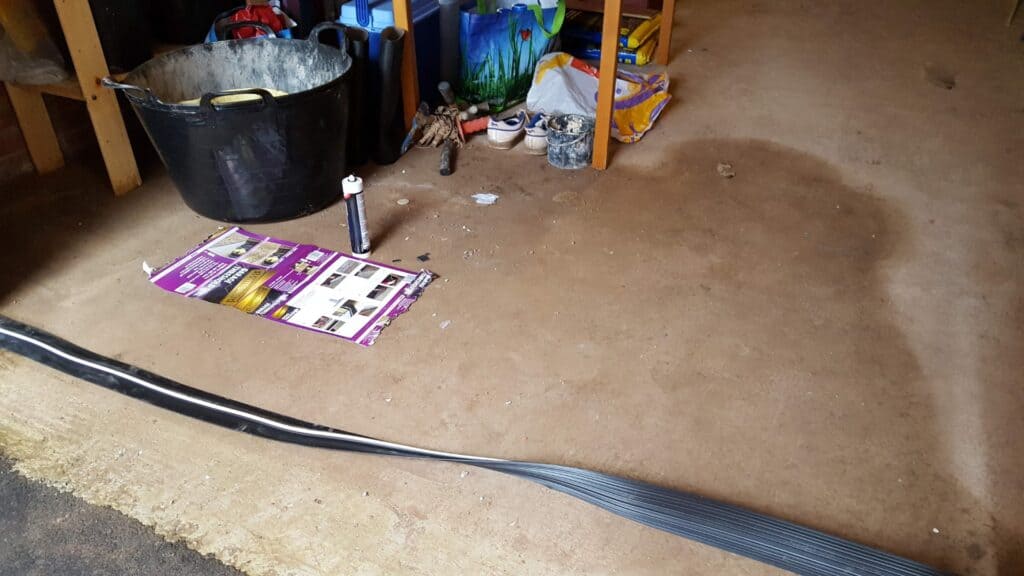If you are looking for high-quality floors for your building, you may have heard about epoxy flooring. This is a relatively inexpensive, durable floor that is easy to maintain. On the other hand, you may notice bubbles in your epoxy flooring from time to time. This can impact the integrity of your structure, and you may be wondering how to remove them.
Fortunately, this is something you should be able to do on your own. What is epoxy flooring, and how do you remove bubbles from your epoxy floors? Take a look at a few important points below, and make sure that you protect your epoxy floors if you want to get the most out of them.
What Are Epoxy Floors?

Epoxy floors are among the most popular flooring options available. Sometimes, they are called polymer floors or resin floors. Epoxy floors are a mixture of two main substances: the first is called resin and the second is a hardener.
Typically, epoxy floors are placed on top of other substances. For example, you may combine your epoxy floors with tile, VCT, wood, or concrete. While epoxy floors are usually used in commercial establishments and heavy industries, they can also be installed in residential buildings.
If you have a company that has tight deadlines to meet, you might be looking for floors you can install quickly. Epoxy floors fit the bill.
How Are Epoxy Floors Installed?

If you want to install epoxy floors, there are several steps you need to follow. They include:
- The first thing you need to do is prepare the surface before you apply the epoxy. You need to make sure the epoxy will bond to the substrate. If you do not prepare the substrate by cleaning it properly, your epoxy floors will fail. You also need to grind or sand the substrate to make sure it is smooth.
- Before you apply the epoxy, you need to apply a suitable primer. Priming the floor is important because it extends the lifespan of your epoxy floors.
- You may also need to use epoxy grout to fill any cracks or holes. This is important for making sure the surface is smooth.
- You need to give the substrate some time to rest. Then, you can apply the first coat of your epoxy paint. Make sure you read the instructions carefully to figure out how to mix it.
- Before you apply the final coat of epoxy paint, you may need to sand or fill the floor. Then, you can apply the final coat.
You may need to give the epoxy floor time to set before you start walking over it. In the end, this is a much shorter installation process when compared to other types of floors.
Why Do You See Bubbles in Your Epoxy Floors?
As your epoxy floor begins to set, you need to keep an eye on it to make sure there are no problems. One of the most common issues people encounter with epoxy floors is the development of bubbles.
If you see bubbles showing up in an epoxy floor that you have just finished, this is a specific process called outgassing. Even though you have followed all necessary steps to make sure you applied your Epoxy paint to a smooth surface, there might have been air bubbles present.
These air bubbles are rising to the surface, trying to escape from the epoxy floor. It can cause temporary bubbles, craters, pinholes, or blisters.
Even though this might be an issue that will resolve itself, you need to keep an eye on this process. If there are bubbles forming in your epoxy floors, they can trap liquids and dirt, harming the final appearance.
You might also have concrete that has air trapped inside of it as well. You need to make sure you cure any concrete properly before you use it to construct your floors. If the concrete is soft, there could be air trapped in the slab. Then, when you try to make your epoxy floor, the air might escape from the concrete, leading to bubbles on the surface.
Finally, you might also have bubbles underneath your concrete because you did not prepare the surface appropriately. You need to make sure the surface is as smooth as possible before you apply epoxy to the ground. If you do not take the time to prepare the surface appropriately, you may see bubbles rise from the surface. Again, bubbles are important because they could damage the integrity of your epoxy floor.
How Can You Remove Bubbles from Epoxy Floors?

Fortunately, there are a few ways you can remove bubbles from your epoxy floors as well. Some of the tips you may want to follow include:
- Use a Metal Roller: One of the first steps you may want to take is to use a metal roller to remove air bubbles from the surface. If you are actively pouring your epoxy primer, you need to keep a close eye on it. If you see bubbles start to form, you can use a metal porcupine roller to remove them as quickly as possible. Of course, you do not want to damage your epoxy floor with the metal roller, but this is one of the ways you can remove bubbles.
- If you see bubbles rising to the surface after you have already installed the prime coat, then you may want to reprime the affected area. This is one of the top ways you can ensure the integrity of your epoxy floors when you apply future coats.
- If you see bubbles rising to the surface after you have already applied several coats, then you may want to send down the affected area. Then, you can patch the area using a topcoat. Even though it can be frustrating to see these bubbles after you have already applied several coats, it is important for you to take your time and remove the bubbles without damaging the rest of the surface.
- If you only see a few scattered bubbles here and there, then you may want to use a heat gun to pop the bubbles. Applying a bit of heat can break the bubbles easily. You need to be very careful not to blow dust into the surface. Therefore, make sure you do not get too close. You should also make sure to clean the equipment before you use it.
- You can also use a propane torch. Make sure you gently blow the torch back and forth across the surface. You do not want to apply sustained heat to a single area or you could permanently damage your epoxy floors.
Of course, the best way to deal with epoxy bubbles is to prevent them from happening in the first place. Before you apply your epoxy paint, you should make sure the surface is prepared appropriately. You should also make sure you use concrete that doesn’t have a lot of air pockets in it.
What Are the Benefits of Epoxy Floors?
There are a lot of benefits that come with epoxy floors. Many commercial establishments choose epoxy floors because they are strong, durable, and easy to maintain. They are also popular because they can stand up to heavy traffic, caustic chemicals, and extreme temperatures. These same properties make epoxy floors popular in residential areas as well.
If you are thinking about installing epoxy floors, there are several specific benefits you should consider. They include:
They Are Easy To Clean
One of the biggest reasons why people consistently choose epoxy floors is that they are easy to clean. Epoxy floors are not manually laid down. Instead, they are poured across the surface. Therefore, you do not have to worry about dealing with ridges, joints, or seams that you may encounter with tile flooring.
You don’t have to worry about getting down on your hands and knees to dry cleaning solutions into cracks. Without any ridges or seams, they are very easy to maintain. The smooth surface also makes it easier for people who are walking or driving across the floor.
They Resist Water and Stains

Epoxy floors can also resist stains and water. There are numerous other types of flooring that do not stand up to moisture. For example, if water gets underneath laminate flooring, it can ruin the surface. Water can also cause wood surfaces to warp. There are plenty of other flooring types that stain easily, making them just about impossible to remove.
This is not something you have to worry about with epoxy floors. Even though spills will inevitably happen, they are much easier to clean up if you have an epoxy floor.
They Are Incredibly Durable
If you are looking for durable floors, you should consider going with epoxy. The chemical compounds used to make epoxy floors create a surface that is incredibly resistant to heavy traffic, heat, temperature shocks, and any other stress you could possibly imagine.
If you spill a dangerous chemical on the epoxy floor, it will probably stand up to this type of stress. If you want floors that will last a long time, you should choose epoxy floors.
They Resist the Transmission of Infectious Particles
You need to take steps to protect everyone from harm. This includes potential viruses and bacteria. Epoxy floors can resist the transmission of infectious particles. Because they resist moisture, you don’t have to worry about mold or mildew building up.
Because epoxy floors do not have cracks, ridges, or seams, there aren’t a lot of places for bacteria and viruses to hide. Therefore, you can minimize the risk of infection transmission by installing epoxy floors.
They Are Cost-Effective
Finally, the epoxy floors are very cost-effective. When compared to other types of flooring, epoxy floors do not cost as much per square foot: it can be as little as $3-7 per square foot. Furthermore, because epoxy floors are so durable, you will not have to replace them for a long time.
You can also use epoxy floors to maximize the amount of natural light in the room, reducing the amount of money you spend on utilities. Lastly, you don’t have to do a lot to take care of epoxy floors. They are low maintenance, helping you save time and money.
These are just a few of the many benefits of epoxy floors.
Frequently Asked Questions About Bubbles in Epoxy Floors
There are several common questions people ask about epoxy floors. Some of the most common questions people have include:
There are a lot of reasons why people really like having epoxy floors. In general, epoxy floors are very easy to maintain. They are also not that expensive. Epoxy floors can also resist a wide variety of stresses. Examples include strong chemicals, high temperatures, and heavy traffic. If you want floors that will last a long time, then you should consider going with epoxy floors.
It is not unusual to see bubbles as you pour your epoxy floors; however, this is not something you should ignore. If you ignore bubbles in your epoxy floor, you could permanently damage the surface. Therefore, you need to make sure the surface is primed appropriately before you pour your epoxy paint. You should also make sure you use concrete that does not trap a lot of air pockets.
In general, taking care of epoxy floors is relatively easy. They do not have a lot of seams and joints, so you do not have to worry about getting into cracks and crevices. Epoxy floors also do not stain easily. Therefore, if someone spills something, it shouldn’t be hard to clean up. While you do need to take care of your epoxy floors, they do not require a lot of work. This is one of the reasons why they are so popular.
